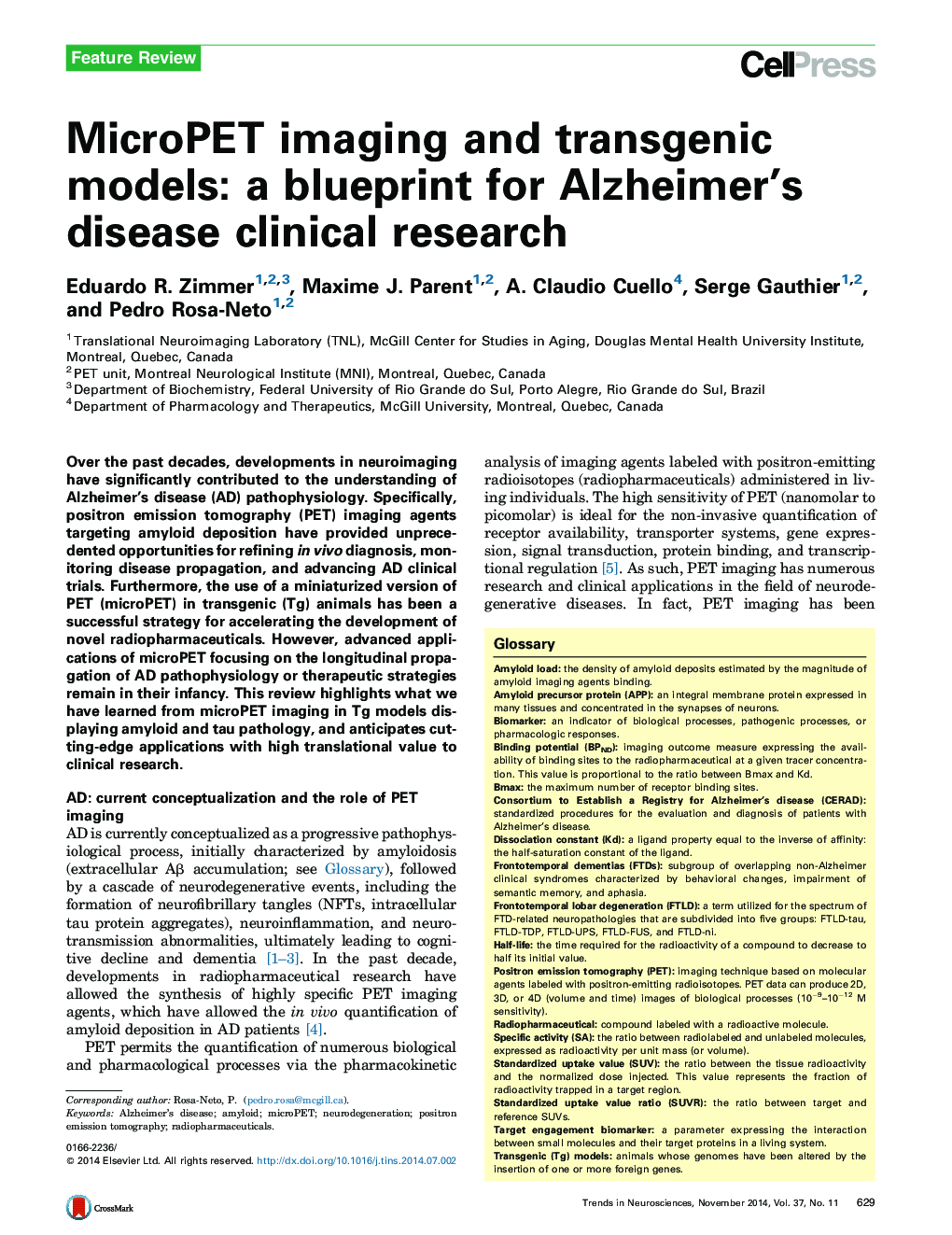| Article ID | Journal | Published Year | Pages | File Type |
|---|---|---|---|---|
| 4354255 | Trends in Neurosciences | 2014 | 13 Pages |
•Transgenic models of amyloid and tau pathology have been used as platforms for the development of PET imaging biomarkers.•MicroPET constitutes a powerful strategy for in vivo assessment of pathophysiological processes in transgenic models.•The smaller brain volume of mice, the heterogeneity of model phenotypes, and the lack of harmonized acquisition protocols contribute to the variability across studies.•Longitudinal assessment using transgenic rats is a reasonable strategy for increasing reproducibility and maximizing translational value.
Over the past decades, developments in neuroimaging have significantly contributed to the understanding of Alzheimer's disease (AD) pathophysiology. Specifically, positron emission tomography (PET) imaging agents targeting amyloid deposition have provided unprecedented opportunities for refining in vivo diagnosis, monitoring disease propagation, and advancing AD clinical trials. Furthermore, the use of a miniaturized version of PET (microPET) in transgenic (Tg) animals has been a successful strategy for accelerating the development of novel radiopharmaceuticals. However, advanced applications of microPET focusing on the longitudinal propagation of AD pathophysiology or therapeutic strategies remain in their infancy. This review highlights what we have learned from microPET imaging in Tg models displaying amyloid and tau pathology, and anticipates cutting-edge applications with high translational value to clinical research.
